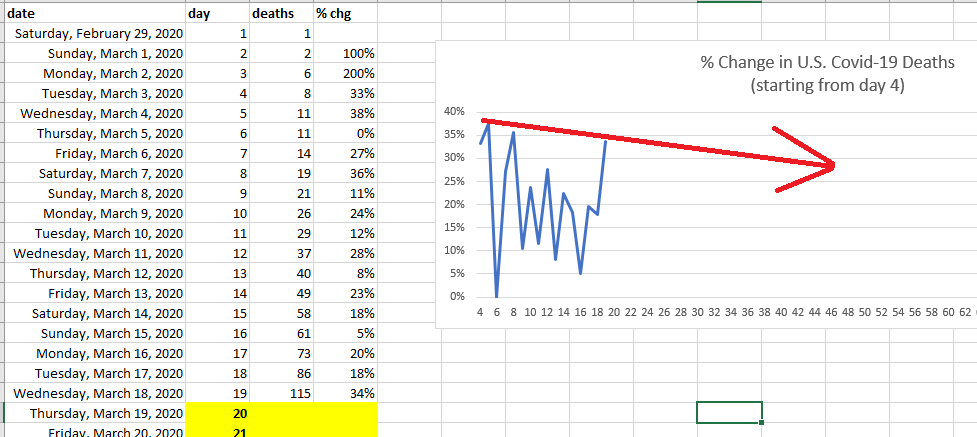This COVID-19 crisis has brought with it, palpable levels of fear, globally. It’s created market crashes, ghost towns, curfews, and containment areas.
Even the Federal Reserve is availing ‘trillions’ in support.
Financial news outlets are reaching all-time high levels in viewership – which itself, can be used as yet another good sentiment indicator for saavy investors.
If patterns – such as those identified in investor sentiment – can be identified, then these basic principles of pattern recognition and trend analysis should be applicable across datasets, such as in public health and safety and in healthcare.
Students, staff, and faculty at Johns Hopkins’ CSSE department have thoughtfully constructed a website to support data visualization of infection rates and mortality globally.
https://gisanddata.maps.arcgis.com/apps/opsdashboard/index.html#/bda7594740fd40299423467b48e9ecf6
Trends can immediately be identified, and from those, anyone can extrapolate what will be the future ‘iff’ those trends continue.
Using this dataset, it is evident that if the trends continue, there will be a negligible percent-rise in U.S. COVID-19 deaths by early April 2020.
Presuming that the percent-rise in U.S. deaths from COVID-19 reaches 1% by early April, then this suggests about 170 deaths in the U.S.
If the curfews, quarantines, travel restrictions, containment areas, and pharmacotherapeutic research efforts are collectively successful, then these efforts will only aid in supporting the current trend.
Thus far, these efforts have been successful, and many of the macroeconomic indicators have not yet displayed ‘actual’ signs of distress. See the monthly update for an assessment of these macro indicators.
However, if these containment efforts fail, then the public health trends will change, and rather horribly. The trend’s percent-change in deaths will rise, and the percent-rise in deaths will likely lead to substantial impacts on macroeconomic indicators most investors use to protect their retirement accounts, other investment portfolios, endowments, and other institutional funds.
Trend analysis and pattern recognition helps households to be prepared for these rare times of crisis, and understand the potential risk macroeconomic deterioration might have on their family.
People from economically disadvantaged American families are especially invited to use pH14 Plan tools to monitor these trends, since there’s less cushion on which to rely during times of emergency.
While current trends fortunately forecast a negligible rise in deaths attributable to COVID-19 after first week of April, if perhaps the trends change negatively, it will have a uniquely devastating impact on economically disadvantaged families – like unto the Great Recession.
The wealth of the bottom half of households is improving since 2012…
But in spite of this progress, over half (51%) of U.S. households still can’t survive financially beyond 3 months, and people from economically disadvantaged families are at highest risk of hardship during times of crisis.
https://www.stlouisfed.org/~/media/files/pdfs/hfs/assets/2019/race_economic_security_niagara_2_21_19.pdf?la=en
Eventually, if for no other reason than to avoid and prevent distress during rare times of crisis, community-led economic development models must be coordinated. These programs don’t require any act of Congress or Executive branch intervention, and can generally be operated voluntarily by tens of millions of Americans.
Most grocery stores have no toilet paper, no rice and beans, no bottles of alcohol… Perhaps if current trends change, households will need it the extra supplies at home. But trend analysis of the current daily percent-change in U.S. deaths from COVID-19 suggests at present, this will generally be over by early April.
** Updated 3/18/20 **
The trend has already shifted, with an approximate 34% jump in deaths overnight.
Updated chart will be posted below, periodically throughout this process.
